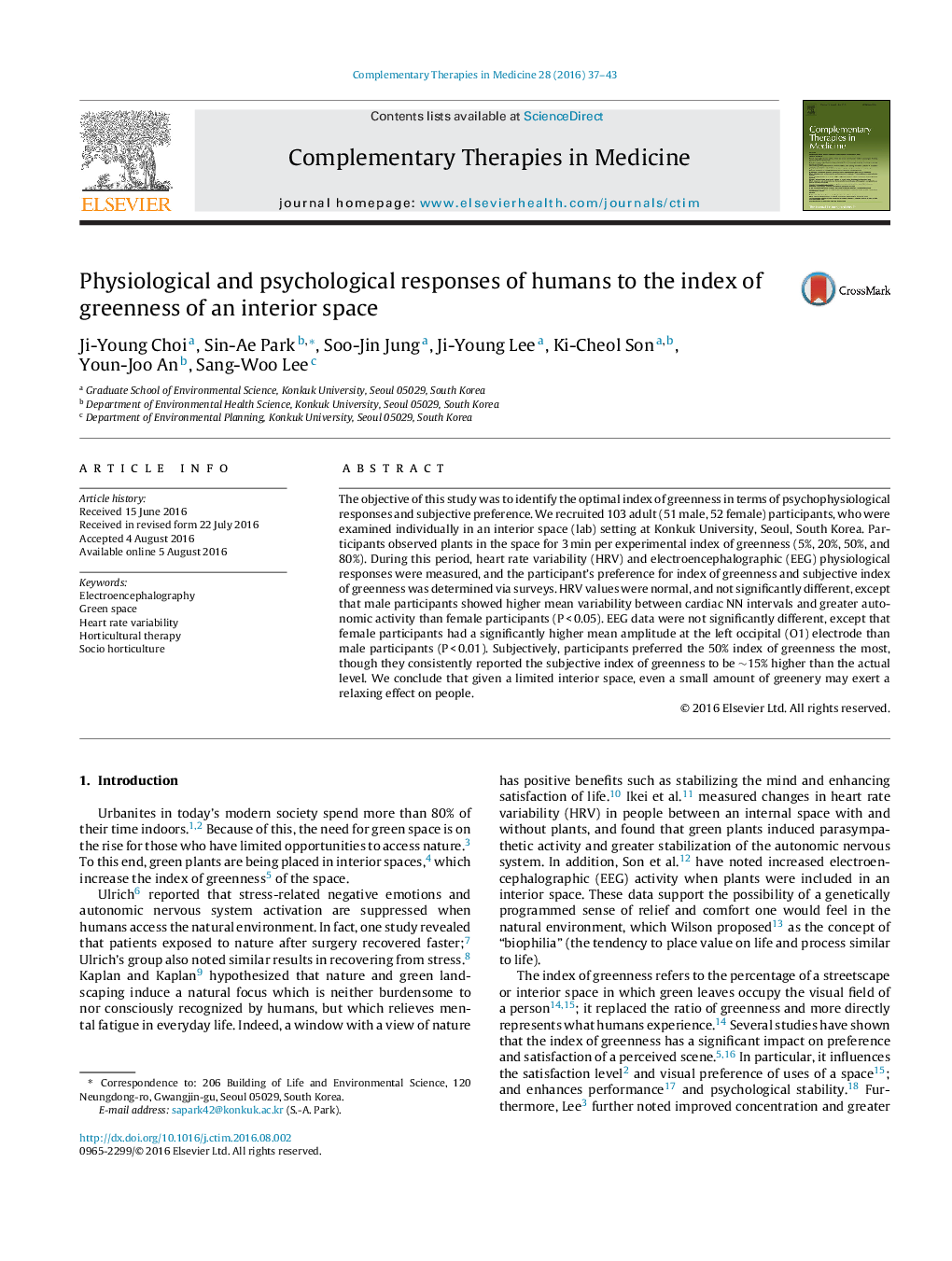| Article ID | Journal | Published Year | Pages | File Type |
|---|---|---|---|---|
| 2629095 | Complementary Therapies in Medicine | 2016 | 7 Pages |
Abstract
The objective of this study was to identify the optimal index of greenness in terms of psychophysiological responses and subjective preference. We recruited 103 adult (51 male, 52 female) participants, who were examined individually in an interior space (lab) setting at Konkuk University, Seoul, South Korea. Participants observed plants in the space for 3Â min per experimental index of greenness (5%, 20%, 50%, and 80%). During this period, heart rate variability (HRV) and electroencephalographic (EEG) physiological responses were measured, and the participant's preference for index of greenness and subjective index of greenness was determined via surveys. HRV values were normal, and not significantly different, except that male participants showed higher mean variability between cardiac NN intervals and greater autonomic activity than female participants (PÂ <Â 0.05). EEG data were not significantly different, except that female participants had a significantly higher mean amplitude at the left occipital (O1) electrode than male participants (PÂ <Â 0.01). Subjectively, participants preferred the 50% index of greenness the most, though they consistently reported the subjective index of greenness to be â¼15% higher than the actual level. We conclude that given a limited interior space, even a small amount of greenery may exert a relaxing effect on people.
Related Topics
Health Sciences
Medicine and Dentistry
Complementary and Alternative Medicine
Authors
Ji-Young Choi, Sin-Ae Park, Soo-Jin Jung, Ji-Young Lee, Ki-Cheol Son, Youn-Joo An, Sang-Woo Lee,
